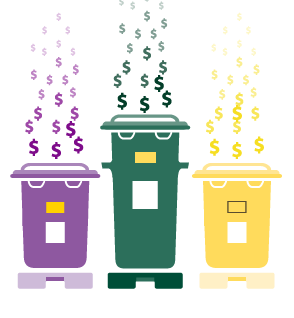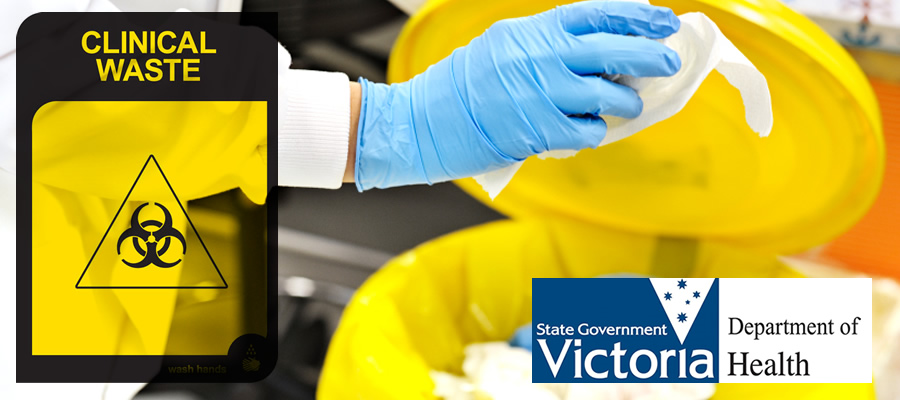What A Waste!
How Can Better Environmental Management Planning Improve Operational & Cost Efficiencies In The Aged Care Sector?

In 2011-12, an audit conducted by Relivit and Office of Environment and Heritage revealed that the average 80 bed aged care facility in Sydney produces approximately 75 tonnes of general waste per year. The vast majority of this is sent to landfill. These same facilities paid just over $20,000 for the collection and disposal of their waste and recycling.
Along side this, facilities are expected to consider their environmental performance by conducting regular waste audits, forming a waste committee, providing data to senior management whist minimising waste and increasing recycling.
The Residential Aged Care In Australia 2010-11: A Statistical Overview report produced by the Australian Institute of Health and Welfare (AIHW), states there are around 169,000 people living in residential aged care. Nearly all of these are on a permanent basis and the numbers are growing.
As numbers grow, so are the sizes of facilities, 45% now offer more than 60 residential places (AIHW Report). And with the increased size, comes an increase in the amount of waste being generated.
There are several challenges aged care facilities face in terms of their waste management:
- Most facilities do not have a dedicated waste officer position
- They therefore run the risk of being unaware of correct disposal methods
- They run the risk of not knowing if contactor collection and disposal cost figures are accurate
- From a building design perspective, there is a lack of infrastructure or space to support additional waste and recycling streams
- There is limited relevant information available to assist aged care services implement waste reduction programs
- There is little understanding with regards the opportunities to reduce costs, reduce pollution and conserve resources
Better Managing Your Waste
The key to good waste management is knowledge and understanding of the processes involved. For example, how waste is generated, handled and moved across a site as well as stored, disposed and treated.
In the first instance there is an overwhelming number of waste and recycling materials generatied in aged care facilities including Absorbent Hygiene Products (AHP) waste such as incontinence pads and nappies, mattresses, batteries, food waste, green waste, gloves, and plastics to name just a few.
The number of waste and recycling categories may seem overwhelming, however good waste management is all about identifying recyclables or reusable products from general waste and clinical waste and sorting them into their correct containers.
Waste management plans help to identify where there is a need for monitoring, reporting, improvements or cost analysis.
Separating recyclables from general waste is cost efficient. As disposal volumes decrease, cost savings should increase. For example, separating recyclables such as plastics or cardboard out of general waste reduces the weight of the collection load and hence brings down the cost of disposal.
Waste management issues addressed early at the design and construction phase will assist facilities in achieving their waste management goals. Ensuring there is sufficient space to store and separate waste materials is necessary to improve waste and recycling practices. As the number of recyclable materials grows as does the need for space to store materials. In association, by reducing the waste volume generated reduces the demand for landfill space, saves resources, reduces pollution and increases efficiency.
How Education & Training Can Make A Difference
Clients are appreciating the need for a strategic approach to environmental and waste management. To implement such strategies successfully, everyone in the organisation has a part to play.
Defining the role of a waste management officer to take responsibility for waste management should be one of the first steps. This role does not need to be a standalone role; it just requires someone to champion the initiative.
A structured program of education, communication and promotion is then required to raise awareness of waste minimisation in aged care to staff, patients and visitors. This can easily be tailored to work within the constraints of existing resources. By creating a series of initiatives and priorities, clients can develop a clear roadmap to meet their objectives.
For example, working with the Department of Health in Victoria the Meinhardt Environment team undertook an assessment of current and potential future healthcare waste management for the public Healthcare Service and created a suite of initiatives to assist facilities to reduce waste generation and waste to landfill and increase resource recovery.
This has resulted in the establishment of an innovative healthcare waste reporting tool. It includes example clauses to assist with waste data collection and reporting, a waste audit template, supplier engagement initiatives as well as evaluation criteria to determine priority initiatives for the government.
Creating an inclusive environment, where everyone feels like they are contributing and making a difference is crucial.
Providing clear signage, ensuring availability of waste containers to encourage segregation and promoting the use of a standardised bin system are quick-wins and easily implementable solutions, which can help facilities on the
road to waste minimisation goals and improved efficiencies.

